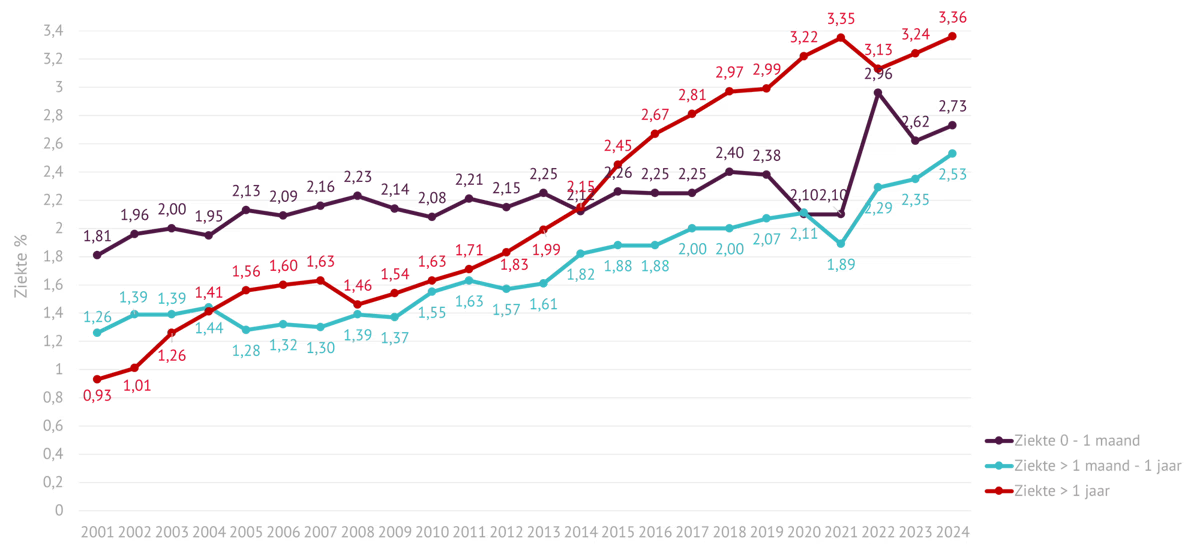The share of employees off work for up to a year and off for more than a year is continuing to rise in Belgium. The increase was particularly notable among younger employees.
Since the turn of the century, Belgium has seen a rise in the number of people unable to work either due to illness or an accident. In the first half of 2024, both medium-term absenteeism (absent for one month to one year due to illness) and long-term absenteeism (more than one year) continued to rise to record highs, figures from HR service provider Securex showed.
Medium-term absenteeism now sits at 2.53% (referring to the number of days not worked versus days to be worked), up from 1.26% in 2001. This is 8% higher than this time last year. The share of long-term absenteeism has seen the most dramatic rise, from 0.93% in 2001 to 3.36% this year, up by 7%.
On an average day in the first half of this year, almost 9% of employees were absent from work, with 6% of workers being absent for a month.
Most affected workers
The most significant rise in absenteeism was seen among younger employees. Medium-term absenteeism among 25- to 34-year-olds rose by a quarter between the first six months of 2022 and 2024. Long-term absenteeism went up by more than 40%.
Securex noted that young people living a more sedentary life than older workers play a big role in this. "Younger workers are more smartphone-dependent, have more screen time and use digital technologies more. As a result, they move much less, which damages their physical health." This was mirrored by a recent IDEWE and Acerta survey which showed that problems with muscles, tendons and joints were the biggest cause of long-term absenteeism during 2018-2022.

Credit: Securex
Mental health problems followed in second place. Younger employees are more likely to suffer burnout, which is again linked to smartphone use and daily screen time.
Blue-collar workers are another impacted group (absenteeism rose by 11% between the first halves of 2022 and 2024). Here, the physical nature of the job is a defining factor. "As a result, they sometimes experience physical issues at a younger age which, combined with less (sense of) autonomy and flexibility, can lead to long-term disability," Securex explained. Job insecurity remains higher in these sectors, which has seen the burnout risk increase.
However, white-collar workers are also off work more than ever. Both medium and long-term absenteeism reached record levels. The increased digitalisation of the workplace is an important factor, especially the shift to predominantly online meetings, meaning people spend more time sitting and staring at a screen.
Changing factors
Ageing was long seen as the main reason for absenteeism, due to the increased risk of illness. This is now true to a lesser extent: among those over 55, sickness absence has fallen in the medium term (-11% since 2022). Long-term absenteeism remained stable at 7.05%, but is still at a very high level.
A rise in mental health problems, and sedentary or unhealthy lifestyles, are new factors to be considered. This is why prioritising the physical and mental well-being of new hires is key, said Stephanie Heurterre of Securex.
"Employers need to develop an integrated approach, taking into account the age-specific challenges of employees. Whether it is caring for young children or grandchildren, physical barriers or readiness for change," she said. "By discussing the different needs and forming a clear framework, you create an environment that promotes everyone's health and engagement, regardless of their age or position."

